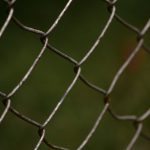Hawks are birds of prey renowned for their exceptional vision and efficient hunting capabilities. Various hawk species can threaten chickens, with the specific threat depending on geographic location. In North America, common hawk species include the red-tailed hawk, Cooper’s hawk, and sharp-shinned hawk.
These birds are natural predators and may target small animals like chickens as part of their diet. Understanding the hawk species prevalent in one’s area is crucial for assessing the potential risks to chickens. Understanding hawk behavior and hunting patterns is equally important for chicken protection.
Hawks employ stealthy hunting techniques and often target chickens during vulnerable periods, such as when free-ranging or roosting. Knowledge of hawk habits can inform effective protective measures for chickens. It is important to note that hawks are protected under federal law, necessitating the use of non-lethal deterrent methods to safeguard chickens and comply with legal requirements.
Table of Contents
- 1 Creating a secure coop: Building a hawk-proof enclosure for your chickens
- 2 Utilizing scare tactics: Implementing visual and auditory deterrents to keep hawks at bay
- 3 Providing hiding spots: Designing the chicken coop and yard with natural cover for chickens to hide from hawks
- 4 Installing netting or fencing: Adding physical barriers to prevent hawks from accessing your chickens
- 5 Supervising free-range time: Monitoring your chickens while they are out in the yard to deter hawks
- 6 Seeking professional help: Consulting with wildlife experts or pest control professionals for additional guidance on keeping hawks away from your chickens
- 7 FAQs
- 7.1 What are some natural ways to keep hawks away from my chickens?
- 7.2 Are there any commercial products available to deter hawks from my chickens?
- 7.3 What should I do if I spot a hawk near my chicken coop?
- 7.4 Are there any legal methods for deterring hawks from my chickens?
- 7.5 What are some signs that a hawk has been targeting my chickens?
Key Takeaways
- Differentiate between types of hawks in your area to understand the specific threats to your chickens
- Construct a hawk-proof enclosure to ensure the safety of your chickens from potential attacks
- Use visual and auditory deterrents to discourage hawks from targeting your chickens
- Incorporate natural hiding spots in the chicken coop and yard to provide refuge for chickens when hawks are present
- Install netting or fencing to create a physical barrier that prevents hawks from accessing your chickens
Creating a secure coop: Building a hawk-proof enclosure for your chickens
Building a Hawk-Proof Coop
One of the most effective ways to safeguard your chickens from hawks is to create a secure coop that is specifically designed to keep hawks out. This involves building a sturdy enclosure using durable materials such as heavy-duty wire mesh or hardware cloth to create a barrier that hawks cannot penetrate.
Designing a Safe and Comfortable Environment
In addition to building a secure coop, it’s essential to consider the layout and design of the chicken enclosure. Providing ample space for your chickens to move around freely while still being protected from potential hawk attacks is crucial. This may involve creating separate areas within the coop for roosting, nesting, and feeding, as well as incorporating perches and hiding spots for your chickens to seek refuge if a hawk is spotted nearby.
Key Features of a Hawk-Proof Coop
A hawk-proof coop should have a solid roof to prevent hawks from swooping down and attacking your chickens from above. By incorporating these design elements, you can significantly reduce the risk of hawks preying on your chickens and provide them with a safe and comfortable living environment.
Utilizing scare tactics: Implementing visual and auditory deterrents to keep hawks at bay

In addition to building a secure coop, implementing scare tactics can be an effective way to deter hawks from targeting your chickens. Visual deterrents such as reflective objects, scarecrows, or predator decoys can help to create an intimidating environment for hawks and discourage them from approaching your property. Auditory deterrents such as wind chimes, bells, or even recorded sounds of predatory birds can also be used to disrupt the peaceful environment that hawks seek when hunting for prey.
By utilizing a combination of visual and auditory scare tactics, you can create an environment that is less appealing to hawks and reduce the likelihood of them targeting your chickens. Another effective scare tactic is the use of motion-activated devices that emit sudden bursts of light or sound when triggered by movement. These devices can startle hawks and other predators, making them think twice about approaching your property.
Additionally, installing motion-activated sprinkler systems can also be an effective way to deter hawks by surprising them with a sudden spray of water when they come too close to your chickens. By implementing these scare tactics, you can create a hostile environment for hawks and discourage them from preying on your chickens.
Providing hiding spots: Designing the chicken coop and yard with natural cover for chickens to hide from hawks
In addition to implementing scare tactics, providing natural hiding spots for your chickens can help them evade potential hawk attacks. This can be achieved by incorporating dense shrubbery, bushes, or trees within the chicken coop and yard to create areas where chickens can seek refuge if they sense danger. By creating natural cover, you can give your chickens a safe place to hide from hawks and other predators, reducing their vulnerability to potential attacks.
Another way to provide hiding spots for your chickens is by creating elevated perches or platforms within the coop and yard. Chickens are natural roosters and feel safer when they are perched off the ground. By providing elevated hiding spots, you can give your chickens a vantage point from which they can spot approaching hawks and seek refuge if necessary.
Additionally, providing multiple hiding spots within the coop and yard can give your chickens options for evading potential attacks, increasing their chances of staying safe from predatory birds.
Installing netting or fencing: Adding physical barriers to prevent hawks from accessing your chickens
In addition to creating a secure coop and providing natural hiding spots, installing netting or fencing can be an effective way to add physical barriers that prevent hawks from accessing your chickens. This may involve covering the top of the chicken enclosure with heavy-duty netting or wire mesh to create a barrier that hawks cannot penetrate. Additionally, installing fencing around the perimeter of the chicken yard can help to further deter hawks from swooping down and attacking your chickens.
When installing netting or fencing, it’s important to ensure that it is securely fastened and free from any gaps or openings that hawks could exploit. It’s also essential to regularly inspect and maintain the netting or fencing to ensure that it remains intact and effective at keeping hawks out. By adding physical barriers to your chicken enclosure, you can create an additional layer of protection that reduces the risk of hawks preying on your chickens and provides you with peace of mind knowing that your flock is safe from potential attacks.
Supervising free-range time: Monitoring your chickens while they are out in the yard to deter hawks

Supervise Free-Range Time
Supervising your chickens during free-range time is crucial in protecting them from potential hawk attacks. By keeping a watchful eye on your flock while they are out in the yard, you can deter hawks from approaching by making your presence known and actively discouraging them from targeting your chickens. This may involve periodically patrolling the yard, making loud noises, or using visual deterrents such as waving flags or shaking noise-making devices to create an intimidating environment for hawks.
Establish a Routine
In addition to actively supervising your chickens during free-range time, it’s essential to establish a routine for letting them out and bringing them back into the coop at specific times each day. By establishing a predictable schedule, you can reduce the likelihood of hawks targeting your chickens during vulnerable periods when they are outside of the coop.
Creating a Safer Environment
By supervising free-range time and establishing a routine for letting your chickens out, you can actively deter hawks from preying on your flock and provide them with a safer environment in which to roam.
Seeking professional help: Consulting with wildlife experts or pest control professionals for additional guidance on keeping hawks away from your chickens
If you’re struggling to keep hawks away from your chickens despite implementing various deterrents and protective measures, it may be beneficial to seek professional help from wildlife experts or pest control professionals. These individuals have specialized knowledge and experience in dealing with predatory birds such as hawks and can provide you with additional guidance on how to effectively protect your chickens from potential attacks. They may be able to offer insights into specific behaviors or habits of local hawk populations and recommend tailored strategies for deterring them from targeting your flock.
In addition to seeking professional guidance, wildlife experts or pest control professionals may also be able to provide you with access to specialized equipment or technologies that can help protect your chickens from hawks. This may include advanced scare tactics such as laser deterrents or sound-emitting devices that are specifically designed to deter predatory birds. By consulting with professionals who specialize in wildlife management, you can gain valuable insights and resources that can help you better protect your chickens from potential hawk attacks and ensure their safety on your property.
In conclusion, protecting your chickens from hawks requires a multi-faceted approach that involves understanding the threat, creating secure enclosures, implementing scare tactics, providing hiding spots, adding physical barriers, supervising free-range time, and seeking professional help when needed. By taking proactive measures to deter hawks and protect your flock, you can create a safe and secure environment in which your chickens can thrive without fear of predatory birds. With careful planning and strategic implementation of protective measures, you can significantly reduce the risk of hawk attacks and provide your chickens with the protection they need to live happy and healthy lives on your property.
If you’re looking for tips on how to keep hawks away from your chickens, you may also be interested in learning about how to build a secure farmhouse chicken coop. Check out this article for helpful advice on creating a safe and comfortable environment for your poultry.
FAQs
What are some natural ways to keep hawks away from my chickens?
Some natural ways to keep hawks away from your chickens include providing overhead cover such as netting or trees, using scare tactics like reflective objects or noise makers, and having roosters to help alert the flock of danger.
Are there any commercial products available to deter hawks from my chickens?
Yes, there are commercial products available such as hawk decoys, predator eye balloons, and electronic deterrents that can help keep hawks away from your chickens.
What should I do if I spot a hawk near my chicken coop?
If you spot a hawk near your chicken coop, it’s important to take immediate action to protect your flock. You can use scare tactics, such as making loud noises or waving your arms, to try to scare the hawk away. It’s also a good idea to provide overhead cover for your chickens to help protect them from aerial predators.
Are there any legal methods for deterring hawks from my chickens?
In the United States, hawks are protected under the Migratory Bird Treaty Act, so it is illegal to harm or kill them. However, there are legal methods for deterring hawks from your chickens, such as using scare tactics and providing overhead cover for your flock.
What are some signs that a hawk has been targeting my chickens?
Some signs that a hawk has been targeting your chickens include finding feathers or remains of a chicken in the area, seeing a hawk circling or perching near your coop, or noticing that your chickens are acting skittish or stressed.
Meet Walter, the feathered-friend fanatic of Florida! Nestled in the sunshine state, Walter struts through life with his feathered companions, clucking his way to happiness. With a coop that’s fancier than a five-star hotel, he’s the Don Juan of the chicken world. When he’s not teaching his hens to do the cha-cha, you’ll find him in a heated debate with his prized rooster, Sir Clucks-a-Lot. Walter’s poultry passion is no yolk; he’s the sunny-side-up guy you never knew you needed in your flock of friends!







